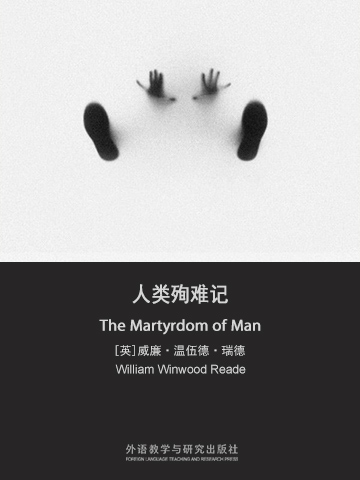人生最痛苦的事情莫过于明知要失去,却还没有发生。
V. S. Pritchett lauded The Martyrdom of Man as "the one, the outstanding, dramatic, imaginative historical picture of life, to be inspired by Victorian science". Since The Martyrdom of Man had, by Victorian standards, a relatively sympathetic account of African history, it was approvingly cited by W. E. B. Du Bois in his books The Negro (1915) and The World and Africa (1947).
Cecil Rhodes, an English-born South African politician and businessman, said that the book “made me what I am”. Other admirers of The Martyrdom of Man included H. G. Wells, Winston Churchill, Harry Johnston, George Orwell, Susan Isaacs, A. A. Milne and his son Christopher Robin, and Michael Foot.
威廉•温伍德•瑞德最广为人所知(所谓的)书要数被歇洛克•福尔摩斯如数家珍般看待的《人类殉难记》(The martyrdom of Man)。这是一本关于西方世界的世俗史,在书中,瑞德试图用类似在研究自然科学中所用的方式追溯西方文明的发展。他以此来进一步阐述他的“世俗人文主义”,他对传统的宗教与道德攻击颇多。他是一个无神论者,也是个社会达尔文主义者,相信“适者生存”。他甚至想创建一个新文明。塞西尔•罗德斯,一位生在英国的商人加政客,说:“这本书塑造了我。”
The Martyrdom of Man (1872)—whose summary running head reads "From Nebula to Nation"—is a secular, "universal" history of the Western world. Structurally, it is divided into four "chapters" of approximately 150 pages each: the first chapter, "War", discusses the imprisonment of men's bodies, the second, "Religion", that of their minds, the third, "Liberty", is the closest thing to a conventional European political and intellectual history, and the fourth, "Intellect", which discusses the cosmogony characteristic of a "universal history".
- Author's Preface
- Chapter 1 – War
- Chapter 2 – Religion
- Chapter 3 – Liberty
- Chapter 4 – Intellect













 京公网安备 11010802032529号
京公网安备 11010802032529号
笔记加载中...